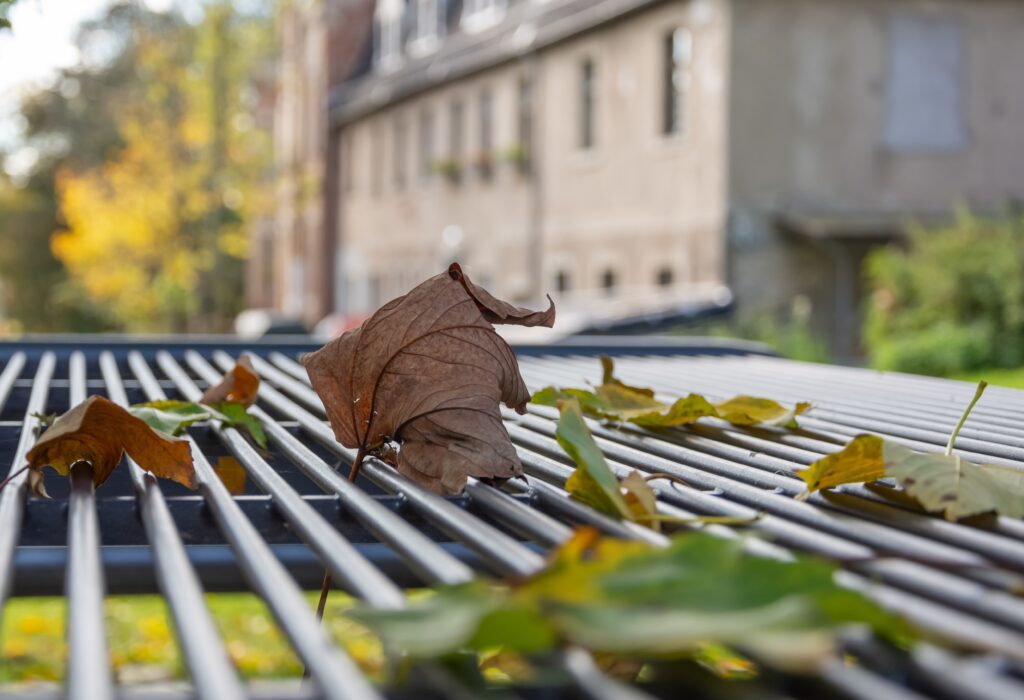When it comes to safeguarding your home from water damage, the choice of gutter system plays a significant role. Two primary options are leaf protection gutters and traditional gutters. While leaf protection systems are gaining popularity, traditional gutters still have their place in many homes. In this article, we’ll compare both systems to help you decide which one is best for your home, when a leaf protection system might not be necessary, and how to make an informed decision through professional inspections.
What Are Traditional Gutters?
Traditional gutters are the standard open-channel systems that direct water away from your home’s roof and foundation. They are effective in managing rainwater flow, but they require regular maintenance to prevent clogging from debris like leaves, twigs, and dirt. Traditional gutters are often made of materials like aluminum, steel, or vinyl and are widely used because they are cost-effective and reliable.
Read more: Weather Vane Roofing Gutters Selection
Leaf Protection Gutters: A Quick Overview
Leaf protection gutters, on the other hand, come equipped with covers, screens, or inserts to block debris while allowing rainwater to pass through. These systems are designed to reduce or eliminate the need for frequent cleaning. They are particularly beneficial in homes surrounded by dense tree cover or in areas with heavy seasonal debris.
Comparing Leaf Protection Gutters and Traditional Gutters
1. Maintenance Requirements
- Traditional Gutters: Require regular cleaning, especially in the fall when leaves are abundant. Without cleaning, traditional gutters can easily become clogged, leading to water overflow, foundation damage, and even roof leaks. If you don’t mind climbing a ladder a few times a year, traditional gutters could work for you.
- Leaf Protection Gutters: These systems drastically reduce the need for cleaning, making them ideal for homeowners who want to avoid the hassle of regular gutter maintenance. However, they aren’t completely maintenance-free, as some smaller debris can still accumulate on top of the protection system.
2. Cost Considerations
- Traditional Gutters: These are generally less expensive upfront and easy to install. If you’re on a tight budget or if your home is not surrounded by trees, traditional gutters might be the more cost-effective solution.
- Leaf Protection Gutters: These systems typically come with a higher initial investment due to the added materials and labor for installation. While they save money in the long run by reducing maintenance, they may not be necessary in every situation.
3. Performance in Different Environments
- Traditional Gutters: For homes in urban or low-vegetation areas, traditional gutters are often sufficient. Since there’s little debris to cause clogs, homeowners may only need to clean them occasionally. Traditional gutters can be an excellent choice if your primary concern is efficient water drainage rather than debris blockage.
- Leaf Protection Gutters: If your home is located near forests or areas with significant tree cover, leaf protection systems are a better fit. These systems are especially useful in areas with frequent storms or high winds, which tend to blow debris into gutters.
4. Aesthetic Appeal
- Traditional Gutters: Since they are more open and visible, traditional gutters can sometimes detract from your home’s appearance if they become clogged or dirty. However, they are available in a wide range of colors and materials, allowing you to match them to your home’s exterior.
- Leaf Protection Gutters: These tend to blend more seamlessly into your roofline, especially when installed properly. Since they prevent clogs, leaf protection systems can maintain a cleaner, more polished look over time.

5. When Are Leaf Protection Gutters Unnecessary?
In some cases, a leaf protection system might not be necessary. Homes that are not near trees, shrubs, or other sources of debris may not benefit from the extra cost of gutter guards. If you live in an area with minimal vegetation and can manage the occasional gutter cleaning, traditional gutters should suffice. Additionally, if you’re looking for a simpler and less expensive solution, traditional gutters can be the way to go.
6. Durability and Lifespan
- Traditional Gutters: With regular cleaning and maintenance, traditional gutters can last 20 years or more. However, heavy debris buildup can shorten their lifespan by causing corrosion or sagging.
- Leaf Protection Gutters: While they also require some maintenance, leaf protection systems can extend the life of your gutters by reducing wear and tear caused by debris accumulation. They help prevent the sagging and corrosion that can result from constantly clogged gutters.
Drone Roof Inspections
Whether you have leaf protection or traditional gutters, it’s essential to have your roof and gutters inspected regularly. One emerging trend is the use of drone roof inspections. Drones provide a thorough view of your roof and gutter system without the need for ladders or scaffolding. They can capture high-resolution images of areas that are difficult to access, making it easier to spot potential issues like gutter sagging, clogs, or damage.
Read more: Drone Roof Inspection
A drone roof inspection is a safe and efficient way to ensure your gutter system is functioning properly, whether you’re maintaining a traditional setup or have invested in a leaf protection system. By identifying problems early, you can avoid costly repairs and make informed decisions about upgrades or replacements.
Conclusion: Which is Better for Your Home?
Ultimately, the choice between traditional gutters and leaf protection gutters depends on your specific needs and environment. If your home is surrounded by trees and you want to reduce the time spent on gutter maintenance, leaf protection systems are a solid investment. However, if you live in an area with minimal debris, traditional gutters can be more than enough to protect your home.
Whichever system you choose, it’s essential to have a professional inspect your roof and gutters regularly to ensure everything is in good working order.
